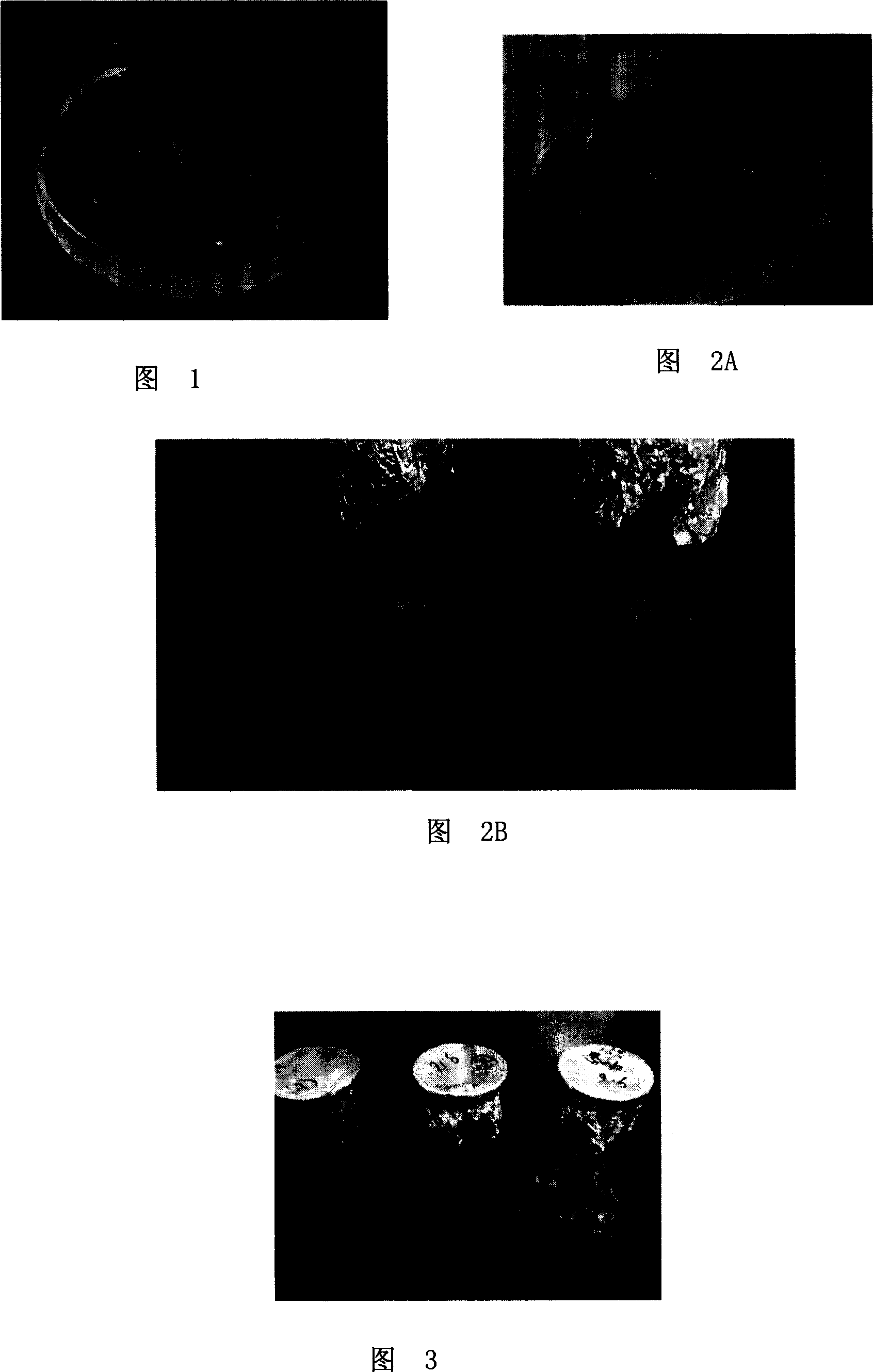Method for breeding salt-tolerance mutant of sweet-potato
A technology of mutants and sweet potatoes, applied in horticultural methods, botany equipment and methods, biochemical equipment and methods, etc., can solve problems such as salt tolerance identification of regenerated plants, and achieve easy mastery, good repeatability, and wide application range Effect
- Summary
- Abstract
- Description
- Claims
- Application Information
AI Technical Summary
Problems solved by technology
Method used
Image
Examples
Embodiment 1
[0048] Embodiment 1, the screening of the salt-tolerant mutant of sweet potato variety Lizixiang
[0049] 1. Prepare the embryogenic suspension cells of Lizixiang according to the following method: (1) Get about 30mm of the stem tip of the vigorously growing plant in the greenhouse, wash it with tap water, disinfect it with 70% alcohol for 10 seconds, then disinfect it with 2% sodium hypochlorite for 5 minutes, Finally, wash it with sterile distilled water; (2) strip the shoot tip of about 0.5mm long under the dissecting microscope, and cultivate it in the addition of 2.0mg / L 2,4-D, 3.0% sucrose at 26-28°C in the dark and 0.8% agar, pH5.8 MS medium, after 4-8 weeks of culture, the ideal embryogenic callus will be formed; (3) the embryogenic callus will be broken into cell clusters with a stainless steel mesh screen with a pore size of 100 μm , and then transferred to a 100mL Erlenmeyer flask containing 2.0mg / L 2,4-D and 3% sucrose, pH5.8 20mL MS medium, placed on a horizontal ...
Embodiment 2
[0059] Example 2, Screening of salt-tolerant mutants of sweet potato variety Xushu 18
[0060] 1. Prepare the embryogenic suspension cells of Xushu 18 according to the following method: (1) Take about 30 mm of the shoot tip of the vigorously growing plant in the greenhouse, wash it with tap water, disinfect it with 70% alcohol for 10 seconds, and then disinfect it with 2% sodium hypochlorite for 5 minutes , and finally washed with sterile distilled water; (2) under a dissecting microscope, strip the shoot tip with a length of about 0.5mm, and culture it in the addition of 2.0mg / L 2,4-D, 3.0% at 26-28°C in the dark On MS medium with sucrose and 0.8% agar, pH5.8, the ideal embryogenic callus will be formed after 4-8 weeks of culture; (3) The embryogenic callus will be broken into cells with a stainless steel mesh screen with a pore size of 100 μm Then transferred to a 100mL Erlenmeyer flask containing 2.0mg / L 2,4-D and 3% sucrose, pH 5.8 20mL MS medium, placed on a horizontal sh...
PUM
| Property | Measurement | Unit |
|---|---|---|
| Diameter | aaaaa | aaaaa |
Abstract
Description
Claims
Application Information
 Login to View More
Login to View More - R&D
- Intellectual Property
- Life Sciences
- Materials
- Tech Scout
- Unparalleled Data Quality
- Higher Quality Content
- 60% Fewer Hallucinations
Browse by: Latest US Patents, China's latest patents, Technical Efficacy Thesaurus, Application Domain, Technology Topic, Popular Technical Reports.
© 2025 PatSnap. All rights reserved.Legal|Privacy policy|Modern Slavery Act Transparency Statement|Sitemap|About US| Contact US: help@patsnap.com


